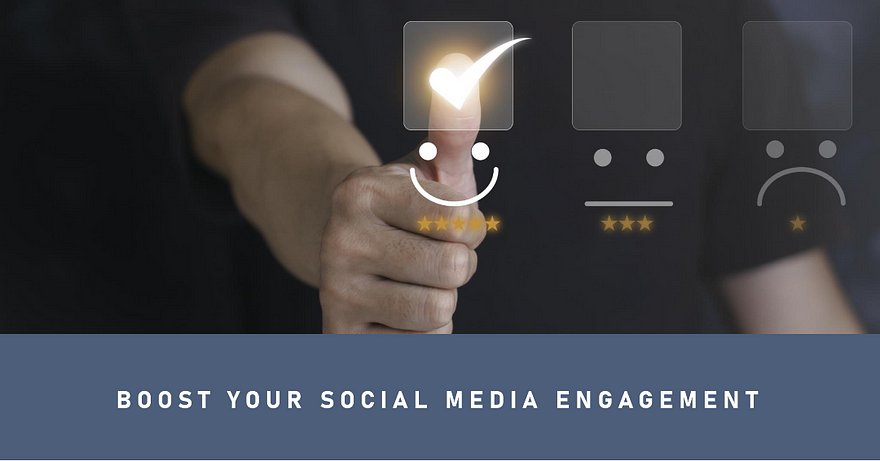
Social media is a powerful tool for engaging with your target audience. It allows you to communicate your brand message, showcase your products or services, and build trust and loyalty with your customers. However, many businesses struggle to increase engagement on social media. They may post content that is not relevant or interesting to their followers, or they may not interact with them enough. This can result in low reach, low conversions, and low retention.
So how can you increase engagement on social media? Here are some tips that can help you boost your social media presence and connect with your audience.
Post relevant and engaging content
The first and most important tip is to post content that is relevant and engaging to your audience. You need to understand who your target audience is, what their needs and interests are, and what kind of content they want to see from you. You can use tools like Bing Audience Network to get insights into your audience’s demographics, behaviors, and preferences.
Once you know your audience, you need to create content that is valuable and appealing to them. You can use different types of content, such as images, videos, infographics, podcasts, blogs, etc., to showcase your brand personality, educate your audience, entertain them, or inspire them. You can also use tools like Bing Content Submission API to optimize your content for search engines and increase its visibility.
The key is to post content that is original, authentic, and consistent with your brand voice. You should also post content that encourages interaction, such as asking questions, conducting polls or surveys, hosting contests or giveaways, or sharing user-generated content.
Interact with your followers
The second tip is to interact with your followers on social media. You need to show them that you care about them and value their feedback. You can do this by responding to their comments, messages, reviews, or mentions. You can also like, share, or comment on their posts, or follow them back.
By interacting with your followers, you can build a relationship with them and increase their trust and loyalty. You can also learn more about their opinions, preferences, and pain points. This can help you improve your products or services, or create more personalized offers or recommendations.
You should also monitor your social media performance and measure your engagement metrics, such as likes, shares, comments, clicks, views, etc. You can use tools like Bing Webmaster Tools to track and analyze your social media data. This can help you identify what works and what doesn’t work for your audience, and adjust your strategy accordingly.
Use social media advertising
The third tip is to use social media advertising to increase your reach and engagement. Social media advertising allows you to target your audience based on their location, age, gender, interests, behaviors, etc. You can also use different formats of ads, such as carousel ads, video ads, story ads, etc., to capture your audience’s attention and drive them to take action.
Social media advertising can help you increase your brand awareness, generate leads or sales, or drive traffic to your website or landing page. You can also use tools like Bing Ads to create and manage your social media campaigns. You can also track and optimize your ad performance and ROI using the same tools.
Common mistakes businesses make on social media are:

- Posting content inconsistently or without a clear strategy: This can lead to low engagement, low reach, and low retention. Businesses should post content that is relevant, valuable, and appealing to their target audience, and follow a consistent schedule. They should also have a clear goal and direction for their social media marketing.
- Not interacting with their followers or responding to their feedback: This can lead to low trust, low loyalty, and low satisfaction. Businesses should show their followers that they care about them and value their opinions. They should respond to their comments, messages, reviews, or mentions, and also like, share, or comment on their posts.
- Using the same content across different platforms: or not optimizing it for each platform. This can lead to low relevance, low interest, and low conversion. Businesses should understand the differences and expectations of each platform and their audience, and create content that is tailored and optimized for each one. They should also use different formats of content, such as images, videos, infographics, etc., to capture their audience’s attention.
- Selling too much or too little on social media: This can lead to low credibility, low value, or low sales. Businesses should find a balance between promoting their products or services and providing useful or entertaining content to their audience. They should also use social media advertising to target their audience based on their demographics, interests, behaviors, etc., and drive them to take action.
- Not using analytics or insights: to measure and improve their social media performance. This can lead to low awareness, low effectiveness, or low growth.
How do I create a social media strategy?
A social media strategy is a document that outlines your social media goals, the tactics you will use to achieve them, and the metrics you will track to measure your progress. A social media strategy can help you plan, execute, and optimize your social media marketing efforts.
To create a social media strategy, you can follow these steps:
- Define your target audience: It is important to understand who you are trying to contact on social media, as well as their online habits, requirements, and interests. To learn more about the characteristics, habits, and preferences of your audience, you can make use of resources such as Bing Audience Network.
- Incorporate ecommerce: You must combine your social media and e-commerce strategies if you are an online seller of goods or services. Customers may purchase straight from your social media channels by utilizing features like shoppable posts and social commerce, which you can develop and manage with solutions like Bing Shopping.
- Optimize your social channels for search: It is imperative that you ensure that your social media accounts and content are easily accessible and pertinent to your target audience and future clients. To improve the exposure and search engine optimization of your material, you can use tools such as the Bing material Submission API.
- Focus on a few key channels: You don’t need to be on every social media platform, but you need to choose the ones that best suit your goals, audience, and industry.
- Make a plan for customer service: When consumers ask you questions, voice grievances, or leave comments on social media, you must reply promptly and courteously.
- Develop a recipe card to guide you: A recipe card is a document that summarizes the key elements of your social media strategy, such as your goals, audience, platforms, content types, posting frequency, tone of voice, etc. You can use this post document as a reference and a checklist for your social media activities.
- Create a content calendar: What you will post on each platform, when you will post it, and why is all laid out in a content calendar. You may minimize recurrence, plan ahead, and maintain consistency with the use of a content calendar.
- Create compelling content: The foundation of any social media campaign is content. Content that is unique, genuine, beneficial, and captivating to your audience is what you need to produce. A variety of content formats, including blogs, podcasts, infographics, videos, and photos, can be used to inform, inspire, and educate your audience as well as to reflect your brand’s personality.
- Track performance and make adjustments: To find out if you are accomplishing your objectives, you must track the outcomes of your social media plan. To monitor and improve the return on investment of your social media advertising, employ tools like Bing Ads and Bing Analytics.
Examples of businesses that have successfully increased engagement
These are some instances of companies that have successfully raised social media participation:
- Starbucks: is known for its engaging social media presence. The company regularly posts high-quality photos and videos of its products and stores, and it interacts with followers on a regular basis.
- Nike: makes emotional connections with its target audience through the use of social media to share tales. All levels of athletes are impacted by the company’s inspirational and aspirational advertising.
- Coca-Cola: uses social media to promote its brand and connect with its target audience in a fun and engaging way. The company’s campaigns are often creative and humorous, and they often feature popular celebrities and influencers.
Conclusion
Engaging on social media is essential for any business looking to expand and thrive in the digital sphere. You may improve your social media presence and establish a connection with your audience by sharing interesting and relevant material, communicating with your followers, and utilizing social media advertising. Additionally, you can build, optimize, and assess your social media campaigns and content with the aid of tools like TypesDigital AI. You may increase social media engagement and accomplish your business objectives by using these tips.






0 Comments